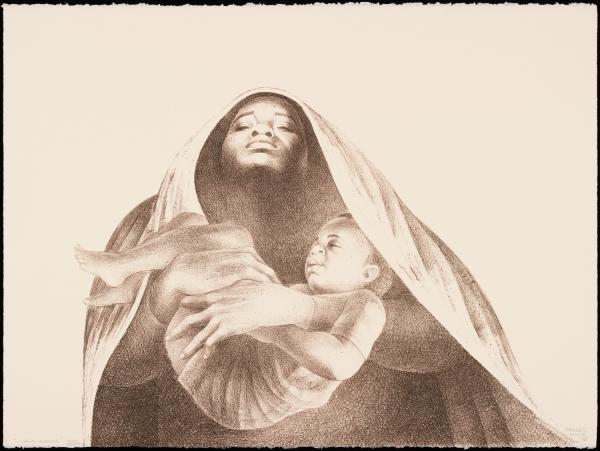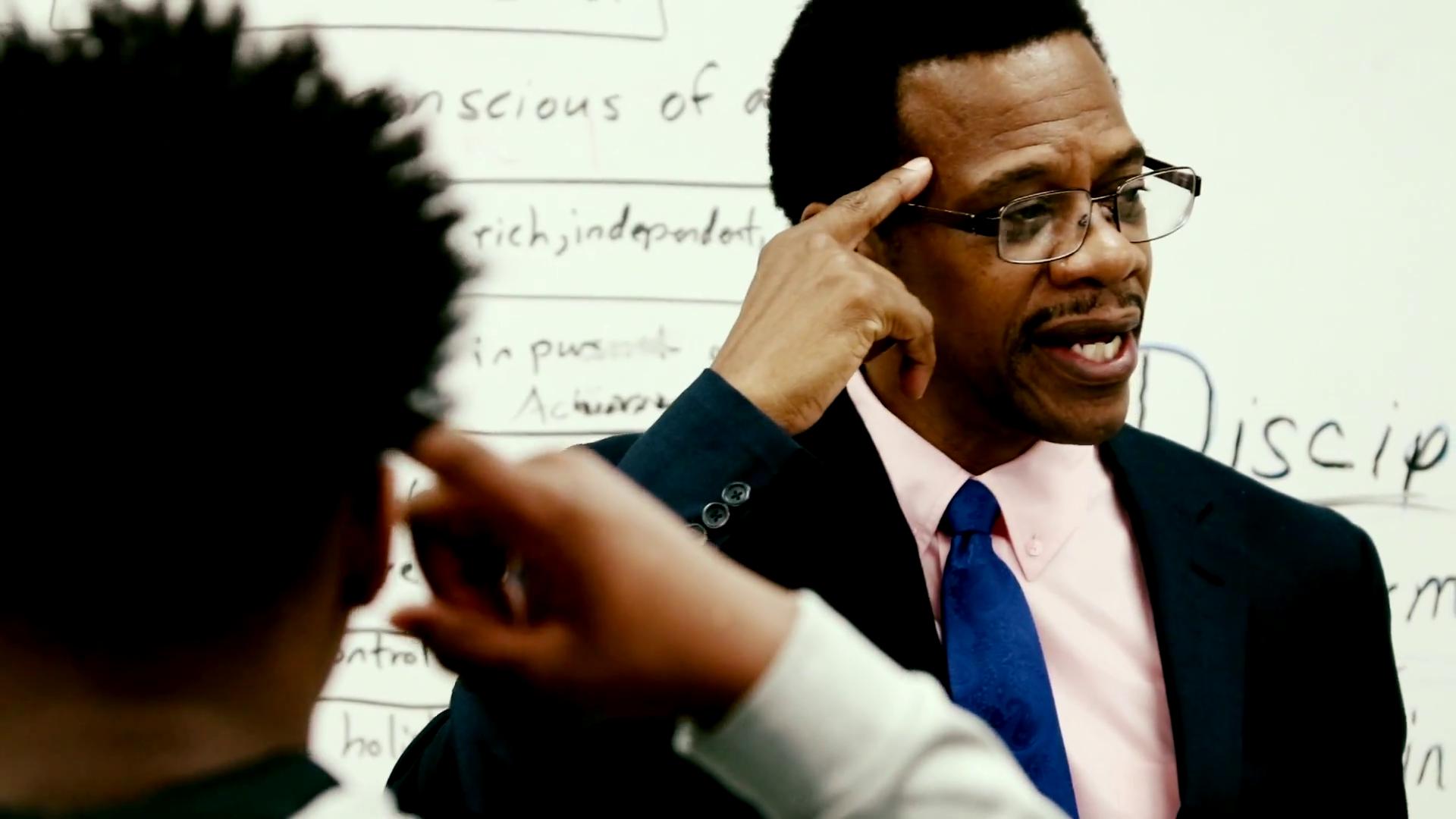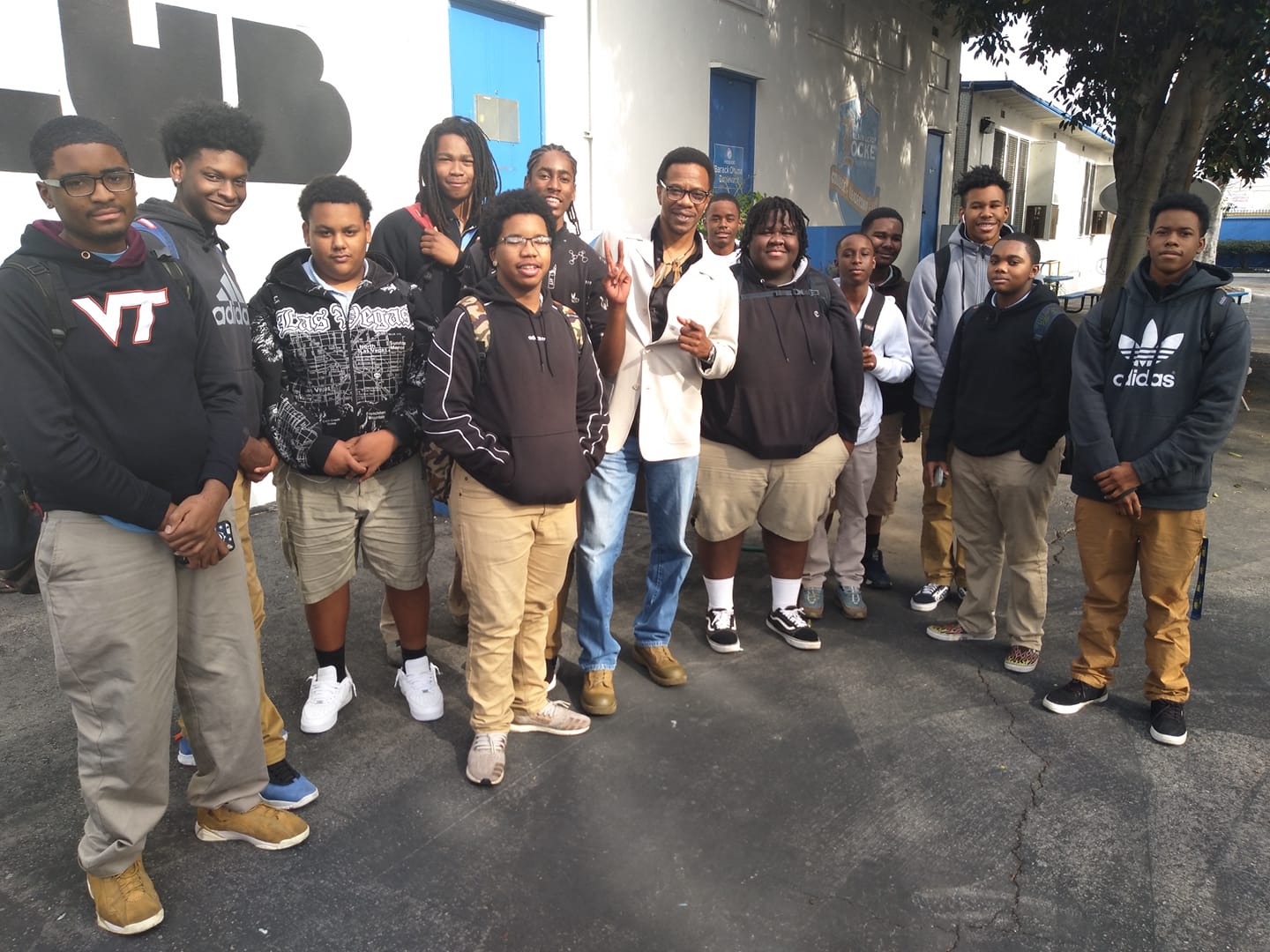Those familiar with the non-profit ecosystem know that there are a variety of youth-focused organizations focused on well-being, education, and mentorship. For Martin Luther King Jr. Day, which this year is on January 16, Andell Family Sundays is highlighting the work of Torrence Brannon-Reese, who, in 1992, founded FAMLI, Inc., the Foundation for Arts, Mentoring, Leadership and Innovation.
Rebecca Horta, Director of Youth & Family Programs, was able to talk to Torrence about FAMLI's See A Man Be A Man mentorship program and about the artwork I Have a Dream (1976) by Charles White in LACMA's collection.
Tell us about yourself and your work with See A Man Be A Man.
I was born in New Orleans, Louisiana, raised by my mother alongside my three brothers. My mother inspired me by going back to school later in life and studying social work. She instilled in my brothers and I the philosophy of helping others and leading a life of service. Early books that were part of our library included those by Dr. Martin Luther King Jr. Years ago, I moved to Los Angeles and pursued a Masters in Social Work at USC. I’m an educator, social worker, writer, community advocate, musician/singer, family man, and mentor. As a Black man living in historic Leimert Park, my civic philosophy is inspired by Dr. King. I was involved in the gang truce movement in 1992. That same year I founded FAMLI, Inc. I crafted my life mastery/mentoring curriculum, which is called "Da Root," in 1994, and I utilize the curriculum as the gas that powers the youth programs See a Man Be a Man and Princess 2 Queen, which focus on middle and high school aged deserving youth. FAMLI’s grassroot efforts help guide youth who live in areas known for gang violence, substance abuse, teenage pregnancy, low graduation rates, and other life difficulties. The program See A Man Be a Man (SAMBAM) has been serving a select at-risk group of young male minority students at Locke High School in the Watts community of South Los Angeles.
In celebration of Martin Luther King Jr. Day, I wanted to mention another connection between our work, specifically our curriculum objectives, and Dr. King. On October 26, 1967, Dr. King spoke to an auditorium full of middle school students attending Barratt Jr. High in Philadelphia. The title of his speech was "What Is Your Life's Blueprint?" In the speech, Dr. King offered specific things of value that inspired students to become the best they could be, and his central message to them was: know who you are, understand your history and culture, and be proud of yourself. These values mirror our curriculum's values, which are based upon what I call nine critical life themes. They are: Spirituality, Culture, Career, Education, Economics, Politics, Health, Family, and Personal Responsibility. Our central objective is to assist youth in a process of developing a sense of self-esteem, self-efficacy, and cultural pride/dignity, and then we help them craft a written nine-point comprehensive strategic plan for their lives, designed around the aforementioned nine critical life themes. This plan is their "blueprint" for success in life.
Please tell us more about SAMBAM’s approach.
If you look at Dr. King’s “I Have a Dream” speech, it informs one’s perspective and vision beyond oneself, for the community and world. SAMBAM is a unique mentoring and school-based program that follows a nine-point curriculum, which empowers youth to accept personal responsibility for their lives. Dr. King’s legacy is embedded in our curriculum. The curriculum uses evidence-based practices such as cognitive behavioral therapy, trauma-informed care, and client-focused care. The curriculum modules center on education, personal responsibility, career, health, economics, culture, family, spirituality, and politics. Last but not least, we are really big on community engagement, and cultural social, and political activism; as a consequence, our students are exposed to the community via a plethora of trips and outings, community activities and events, and educationally stimulating documentaries and films. The goal is to inspire them to care about community and to continue to be actively engaged in civic participation.
Was there a moment when you realized that SAMBAM had a greater impact on the community beyond the classroom?
Recently, Aaron Hall, a former student from the first class of SAMBAM, called me about an opportunity at the Crenshaw YMCA. As a wayward youth and one of our first students in 1999, he graduated high school and attended college. His proposal included bringing SAMBAM to the Crenshaw YMCA, where he recently became Executive Director, so that we can share the principles of the curriculum with local youth. We are very excited to collaborate. SAMBAM’s mission is coming full circle and that shows that we are doing a good thing. I mentored Aaron since his youth, and we have become like father and son.
Thank you for telling us about FAMLI, Inc. and the program See A Man Be A Man. Next, I wanted to talk about an extraordinary print in the LACMA collection titled I Have a Dream by Charles White.
It is a beautiful and powerful depiction of a mother carrying a child in her arms. We have a mother, protector, and guide for the sleeping child. I can't help but think about the title of the work and Dr. King’s speech “I Have a Dream.” The mother yearns for her child to be treated equally, accepted, and respected by the content of their character, not their skin color.
I Have a Dream is one of several prints Charles White created in honor of civil rights leader Martin Luther King Jr.’s “I Have a Dream” speech, which King delivered at the Lincoln Memorial during the March on Washington for Jobs and Freedom on August 28, 1963. The mother is a symbol of hope, pride, and determination.
Yes, and the mother’s cloak is drastic in how it drapes over her head and body and that of the child adding an extra element of protection. The child is asleep, seemingly unaware of the mother’s work to make sure her child has everything they need, not only in this moment but in everyday life.
The mother’s arms are strong, a stoic figure willing to make sure her child bears the fruits of the civil rights movement. She is unstoppable. This portrait is timeless. Over the course of his career, Charles White contributed to progressive causes. In the 1950s, he became involved with the civil rights movement and was especially supportive of Dr. King. White often donated art to fundraising efforts.
This shows the power of great art, so many stories behind an image. Thank you for the honor of discussing Dr. King, and engaging intellectually in respect of a magnificent artistic image, created by the great Charles White.
Thank you for talking with us today about your work, FAMLI, Inc. and See A Man Be A Man.
You can learn more about FAMLI, Inc. online. LACMA’s Andell Family Sundays is about intergenerational conversations and art making. If you know of a non-profit organization or school interested in free bussing or educational programs, please contact Rebecca Horta, Director of Youth & Family Programs at rhorta@lacma.org.
This conversation was edited for length and clarity.





